63 UMMA Objects
63 UMMA Objects

Japanese (Japanese (culture or style))
Bodhisattva Mañjusri (J. Monju Bosatsu), seated on a lion
15th century
Bequest of Margaret Watson Parker
1954/1.207
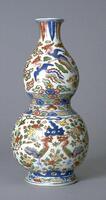
Chinese (Chinese (culture or style))
Double-Gourd Wall Vase
1573 – 1620
Gift of Marian Doering in memory of Paul M. Doering
1979/2.12
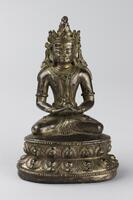
Tibetan (Tibetan (culture or style))
The Buddha Amitâyus, seated in padmasana on a double lotus base, holding a vase of amrita (the elixir of long life)
18th century
Gift of Dr. and Mrs. Leo S. Figiel and Dr. and Mrs. Steven J. Figiel
1980/2.279
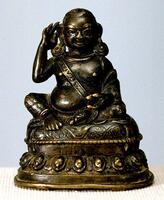
Gift of Dr. and Mrs. Leo S. Figiel and Dr. and Mrs. Steven J. Figiel
1981/2.56

Chinese (Chinese (culture or style))
Buddha, standing, in vitarka mudra
7th century
Museum purchase for the James Marshall Plumer Memorial Collection
1964/2.97
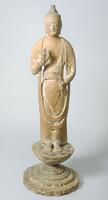
Japanese (Japanese (culture or style))
Bodhisattva Padmapani (Avalokiteshvara; Japanese, Kannon), from Kôfukuji
12th century
Museum purchase made possible by the Margaret Watson Parker Art Collection Fund
1969/1.106
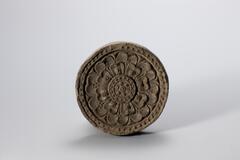
Korean (Korean (culture or style))
Roof-end tile with lotus design
676 – 935
On loan from the YooGeum Museum, Seoul, Korea
LTL2009.7.7
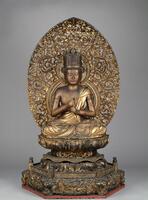
Japanese (Japanese (culture or style))
Vairocana Buddha (Japanese, Dainichi Nyorai)
17th century
Museum purchase made possible by the Margaret Watson Parker Art Collection Fund
2003/2.59.1
![Earthenware roof tile-end with molded lotus design.<br />
<br />
This gray, high-fired earthenware convex eave-end roof tile features a slender thirteenpetal lotus design. It is made from coarse clay mixed with small stone particles. The circular ovary and lotus seeds are depicted in shallow relief, while the lotus petals are slender and lack volume.<br />
[Korean Collection, University of Michigan Museum of Art (2017) p.36] Earthenware roof tile-end with molded lotus design.<br />
<br />
This gray, high-fired earthenware convex eave-end roof tile features a slender thirteenpetal lotus design. It is made from coarse clay mixed with small stone particles. The circular ovary and lotus seeds are depicted in shallow relief, while the lotus petals are slender and lack volume.<br />
[Korean Collection, University of Michigan Museum of Art (2017) p.36]](/media/W1siZiIsIjIwMjIvMDkvMjQvOXVkYnJyYnlyaV9kZWZhdWx0LmpwZyJdLFsicCIsInRodW1iIiwiMjQweDIwMCJdXQ?sha=8f6c2bf6c7b8db77)
Korean (Korean (culture or style))
Roof Tile-End with Lotus Design
676 – 935
Gift of Bruce and Inta Hasenkamp and Museum purchase made possible by Elder and Mrs. Sang-Yong Nam
2004/1.196
![A yellow brownish glaze is applied and crackling covers the entire body.<br />
This bowl has straight wall. The exterior is carved with lotus petals. The below of the mouth is decorated with fret design. The foot is a little low.
<p>This is a cylindrical cup decorated with incised and raised design of lotus petals on the entire outer walls and is fretted on the outer rim. Overall, the cup is yellow-green in color and has three refractory spur marks. Many of the shards, excavated from sediment in the vicinity of Kiln no. 12 at Yucheon-ri, Buan-gun, Jeollabuk-do, are also those of cylindrical cups similar in form to this one.<br />
[<em>Korean Collection, University of Michigan Museum of Art </em>(2014) p.123]<br />
</p>
A yellow brownish glaze is applied and crackling covers the entire body.<br />
This bowl has straight wall. The exterior is carved with lotus petals. The below of the mouth is decorated with fret design. The foot is a little low.
<p>This is a cylindrical cup decorated with incised and raised design of lotus petals on the entire outer walls and is fretted on the outer rim. Overall, the cup is yellow-green in color and has three refractory spur marks. Many of the shards, excavated from sediment in the vicinity of Kiln no. 12 at Yucheon-ri, Buan-gun, Jeollabuk-do, are also those of cylindrical cups similar in form to this one.<br />
[<em>Korean Collection, University of Michigan Museum of Art </em>(2014) p.123]<br />
</p>](/media/W1siZiIsIjIwMjIvMDkvMjQvNWU0NDFuZ3Nuc19kZWZhdWx0LmpwZyJdLFsicCIsInRodW1iIiwiMjQweDIwMCJdXQ?sha=243d2e8e37f3b830)
Korean (Korean (culture or style))
Deep bowl with vertical sides and carved lotus petal design
1200 – 1399
Gift of Bruce and Inta Hasenkamp and Museum purchase made possible by Elder and Mrs. Sang-Yong Nam
2004/1.228

Chinese (Chinese (culture or style))
Glass snuff bottle
1790 – 1880
Gift of Mr. Robert W. Coggan
1980/2.141
Loading…

